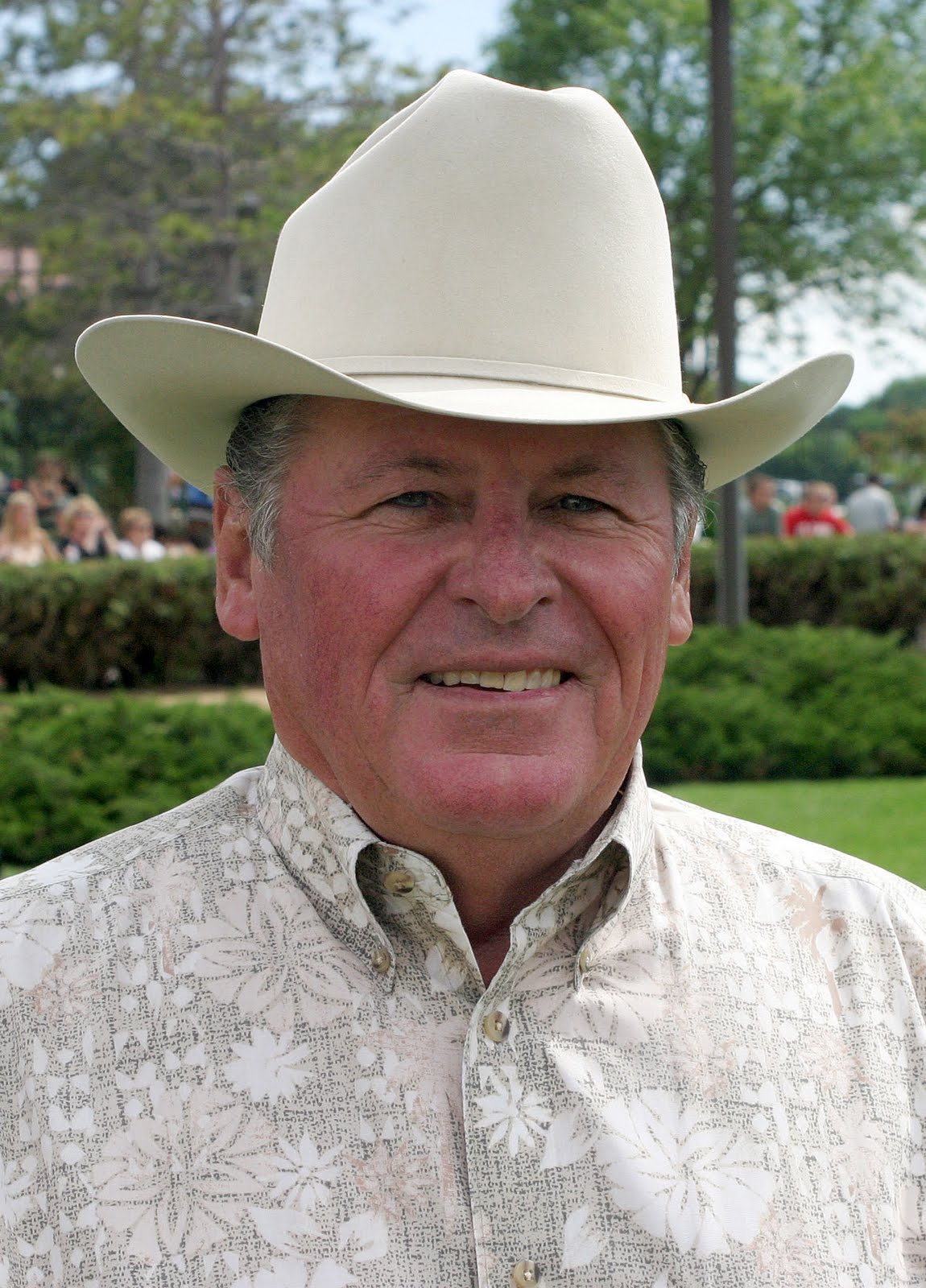Clay Brinson has Arizona written all over him, but he can fit just about anyplace on the planet that offers racing and where his horses fit.
Right now that means Barn C11 at Canterbury Park with a string of thirty, and two or three more on the way.
Canterbury has recruited Brinson from Turf Paradise in Phoenix for some time, but not until this summer did he have horses he thought fit the program in Shakopee. “I wanted to wait until I got horses good enough to come here,” he said.
A new owner from Canada, where Brinson previously spent his summers, made that a possibility this summer, and Brinson at long last responded to the sales pitch he had gotten for some time from Canterbury connections.
Former Claiming Crown director Nat Wess, HBPA president Tom Metzen and stall man Mark Stancato have been selling the Shakopee track to Brinson for some time.
“Nat bugged me constantly about coming here,” Brinson, 64, said, “but, like I said, I just wanted to make sure I had the horses to come.”
So he is in Shakopee now, thanks largely to Terry Hamilton, a horse enthusiast and new owner from near Edmonton. A third of Brinson’s stable belongs to Hamilton, and several are turf specialists.
Here’s the irony of Brinson’s change of summer-time locales: He previously spent that part of the year at Assiniboia Downs in Winnipeg, where he was introduced to Hamilton; so, a Canadian owner he met at a Canadian racetrack is largely responsible for Brinson shifting his stable from Canada to Minnesota.
Brinson’s a respected horseman who cut his training teeth at the California tracks, north and south, from 1968 to 1985 and then shifted to Spokane, Wash.
Brinson moved his stable to Phoenix in 2001, the same year he started spending his summers at Assiniboia. His bloodlines were Arizona and he spent some of his early days racing there, too, as a rider, so that part of the Southwest wasn’t unfamiliar to him.
Brinson and his brother, Gary, the starter at Hollywood Park, grew up in their father’s barn at the Southern California tracks. “We were galloping a few for him by the time we were 14,” Brinson said.
Ross Brinson was born in Chandler, Ariz., and the Brinson boys’ mother was born in Wickenburg, Az. Clay grew up hearing the story of how his father, who’ll be 99 in September, courted his mother on a specific occasion.
“He had taken her on a date and to get her back to the farm where she lived had to cross the (swollen) Hassayampa River,” Clay said. “My dad was wearing a new pair of boots, so he took those off, rolled up his pants legs and carried our mother the 50 yards across.”
Ross Brinson started training, as Clay recalls, in the late 1930s at the old Sportsman’s Park where the Arizona fairgrounds are in Phoenix and eventually moved to Southern California, where he raced at Del Mar, Hollywood Park and Santa Anita as well as the northern tracks. One of his most prominent wins came in the Hollywood Gold Cup in 1947 with Cover Up.
Clay was raised primarily in Arcadia, Calif., but remembers fondly the meets at Del Mar, when the family lived on the beach in a trailer, with their backyard the Pacific Ocean. “We could even gallop horses on the beach in those days,” he said.
He started out in racing as a jockey, but it was a short-lived career, lasting from 1963 through 1967, when problems making weight forced him into the training end of the game. He rode at the California tracks, Turf Paradise, Aksarben, Arlington Park, and several Eastern tracks. He was leading apprentice and later the leading rider one time at Golden Gate Fields, but _ maybe more significantly _ won the final riding title at historic Tanforan, before it burned down in 1964.
His riding career ended on a snowy, chilly November day in 1967 at Narragansset, when the effects of continually battling weight took its final toll. Jocks used to pass the scales anyway they could, including cutting the bottoms off their boots. Trouble was, a jock had to ride the way he checked in. “The clerk of scales wouldn’t let us put on a turtleneck, nothing, even in the cold,” he recalled. “If you had no bottoms on your boots, that’s the way you rode. You rode the way you checked in. ”
On this particular day, Brinson was met by his valet as he pulled up to dismount after a race, but just sat quietly on his horse. “What are you doing?” his valet asked. “Well…we won the race,” Brinson responded. “You weren’t even on the board,” his valet said.
Lightheaded and disoriented from trimming weight, Brinson knew his time as a rider was over.
The shift to training came naturally for him and, if he has enough of his father’s genes, just might continue for another couple of decades. “My dad still has two cocktails at the end of a day,” Clay said. “My brother will pick him up sometimes and take him down to his favorite place.” .